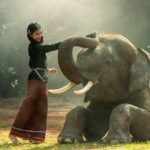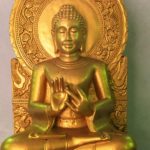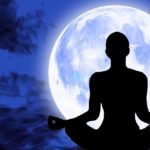Buddhist Sabbath & Holidays in Thailand
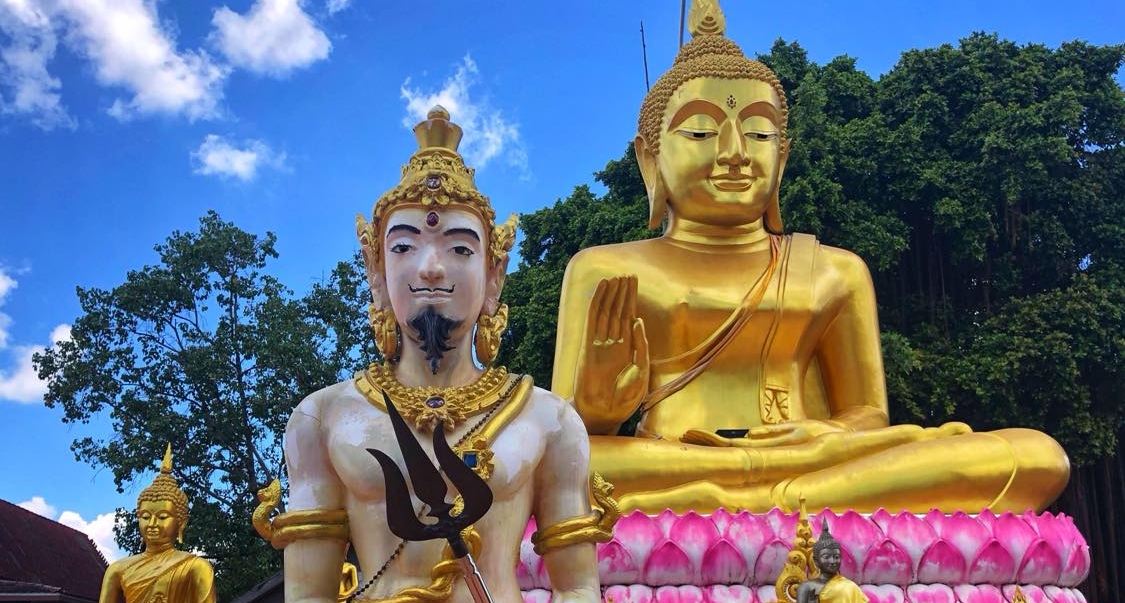
Buddhists in Thailand have a weekly sabbath day, just as Christians do. However, unlike the Christian sabbath, the Buddhist sabbath does not fall always on the same day of the week (such as Sunday or Saturday). It can fall on any day of the week, and corresponds to the 8th day of the waxing moon, the 15th day of the waxing moon (full moon day), the 8th day of the waning moon, and 15th day of the waning moon (if the 15th is an absent month, the 14th day of the waning moon is used).
As these Buddha days use the lunar calendar, it is rather hard to keep track of which day the sabbath day falls on. However, you can easily stay up to date by using this website: Thailand Lunar Calendar. This calendar is in the Thai language, but each of the weekly holy days is easily identified with a Buddha icon.
The Buddhist sabbath in Thailand is called Wan Phra (วันพระ), meaning Monk’s Day, and Wan Tamma Sawana (วันธรรมสวนะ). The Thai word “tamma” (ธรรม) refers to the dharma or teachings of the Lord Buddha. While the word “sawana” (สวนะ) literally means “a flowing outward,” referring to the Buddha’s wisdom that flows from the mouths of Thai monks when delivering sabbath day sermons.
The weekly Buddhist sabbath is also referred to in Thailand as Wan Ubosot (วันอุโบสถ). An Ubosot (or Sim) is the holiest building at a Thai temple. It is where new monks are ordained, special prayer events are held, and where the most sacred Buddha statues or relics are usually placed. Ubosots often remain locked, and ordinarily are not used to deliver a sabbath day sermon. Instead the dharma sermons are given at the temple’s Viharn or congregation hall.
On the Buddhist sabbath day, Thai people are encouraged to go to a temple and make merit, give food and alms to monks, and listen to the teaching of the dharma (which in Thailand is more often spelled as “dhamma” ). However, since the holy Buddha days can fall on any day of the week, many people in Thailand are unable to visit a temple in the morning and listen to monks.
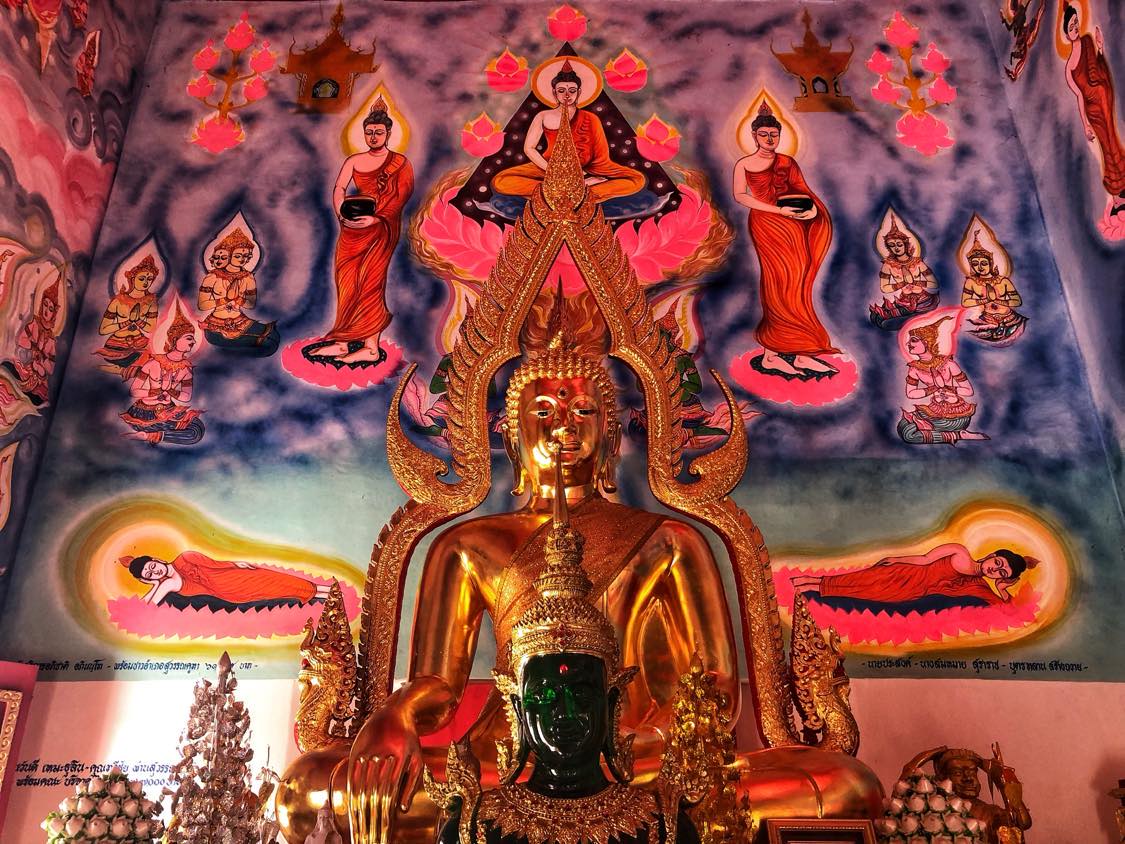
Instead of visiting a temple, devout Buddhists in Thailand will make a special effort to keep the “8 Precepts” of the Buddha. This means that they will:
1) Refrain from killing anything (including insects) and eat only vegetarian meals;
2) Refrain from taking anything that is not theirs or borrow anything without asking;
3) Refrain from lusting after anyone, or engaging in sexual activity;
4) Refrain from lying about anything;
5) Refrain from drinking alcohol;
6) Refrain from eating after noontime;
7) Refrain from any type of entertainment (such as watching TV or listening to the radio);
8) Refrain from lounging on a sofa or cushy recliner chair.
In addition, they will refrain from speaking unkindly of anyone, or engaging in any gossip.
Most devout Buddhists in Thailand have a special prayer room in their house, with icons of the Buddha, amulets, photos of revered monks, and (sometimes) a figure of a Hindu deity such as Lord Ganesha. So, not being able to go to the temple, they will burn incense and make their prayers inside this sacred enclave in their house the night before the Buddha day and the morning of the sabbath.
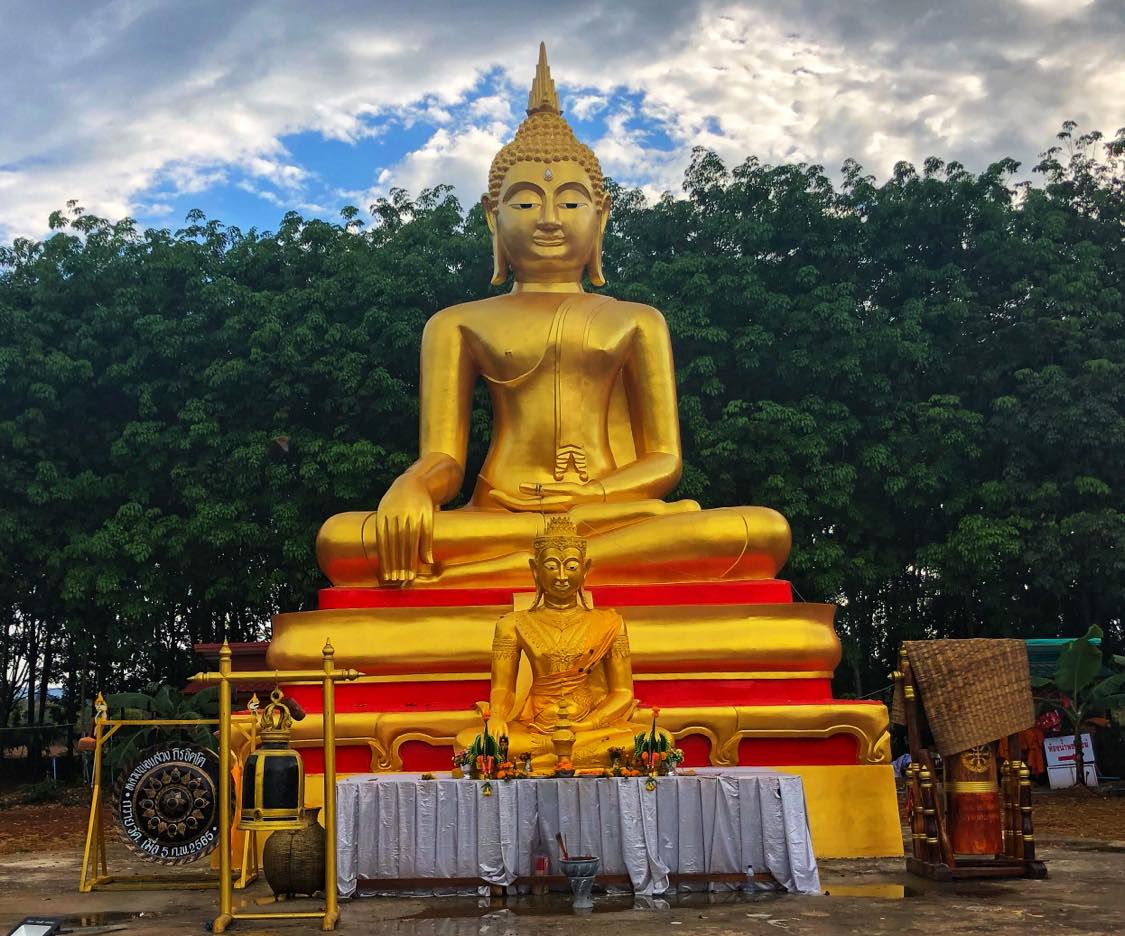
Buddhist National Holidays in Thailand
As Thailand is a devoutly Buddhist country, there are the holy “Buddha Days” that are national holidays. These include:
Makha Bucha Day
Date: Makha Bucha usually falls in February or March, depending on the lunar calendar.
Significance: This Buddhist holiday commemorates the spontaneous gathering of 1,250 enlightened monks who came to hear a sermon from Buddha without prior arrangement. It’s a day to honor the Triple Gem (the Buddha, Dharma, and Sangha) and to reflect on one’s own spiritual path.
Visakha Bucha Day
Date: Visakha Bucha Day typically occurs in May, coinciding with the full moon day.
Significance: Visakha Bucha Day marks three significant events in Buddha’s life: his birth, enlightenment, and passing away (nirvana). It’s one of the most sacred Buddhist holidays in Thailand, as it celebrates the entire life of the Buddha.
Asahna Bucha Day
Date: Asahna Bucha Day takes place on the first full moon day in July.
Significance: This holiday commemorates the Buddha’s first sermon, known as the Dhammacakkappavattana Sutta, which he delivered to his first five disciples. It marks the beginning of the Buddhist monsoon retreat, during which Thai monks stay in their monasteries to study and meditate.
On these 3 Buddhist holidays days, extra celebrations and festivals are held in Thailand, as well as the same activities performed on the weekly Buddha Day sabbaths.
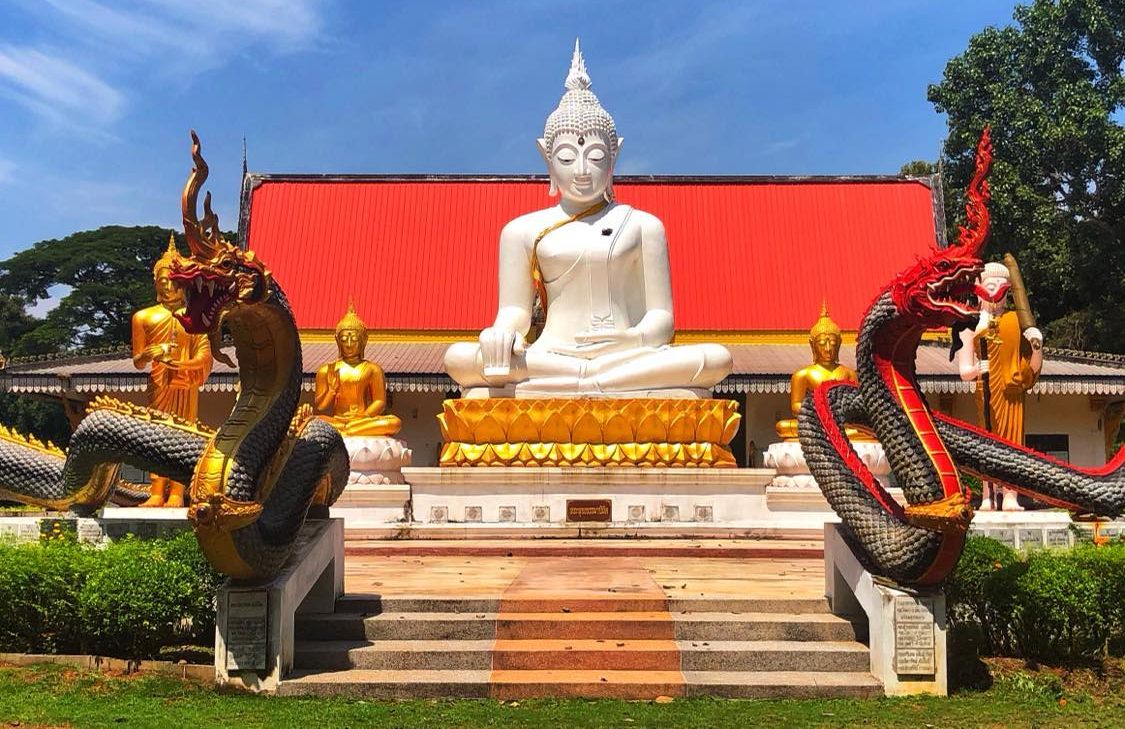
Thai Buddhist Holy Days – Not National Holidays
There are three important Buddhist holy days in Thailand that are not national holidays. These are as follows:
Asalha Bucha Day (Atthami Bucha Day)
Date: Asalha Bucha Day, also known as Atthami Bucha Day, falls on the 15th day of the waxing moon in the eighth lunar month, which is usually in July.
Significance: This Buddhist holiday commemorates the day when the Buddha delivered his first sermon, known as the Dhammacakkappavattana Sutta, to his first five disciples. It is a day where Thai people reflect on the teachings of the Buddha and the importance of following the Eightfold Path.
Wan Khao Phansa (Buddhist Lent or Rains Retreat)
Date: Wan Khao Phansa marks the beginning of the Buddhist Lent in Thailand and usually falls in July, on the first day of the waning moon of the eighth lunar month.
Significance: Thai Buddhist monks traditionally retreat to their monasteries during this three-month period, which corresponds to the rainy season in Thailand. It is a time for intensive meditation, study, and reflection. Laypeople often use this time to deepen their own spiritual practices and make offerings to support the monks.
Wan Ok Phansa (End of Buddhist Lent)
Date: Wan Ok Phansa marks the end of the Buddhist Lent and takes place on the 15th day of the waning moon of the eleventh lunar month, typically in October.
Significance: This holiday signifies the conclusion of the monks’ three-month retreat during the rainy season. It is a time for celebration and gratitude, as well as a time for Thais to make offerings to the monks and seek their blessings.
- Affirmations in Buddhism & Thailand - June 7, 2025
- Speak Thai Naturally Without the Gymnastics - April 20, 2025
- The Best Learn Thai Podcast and YouTube Channel - April 10, 2025

